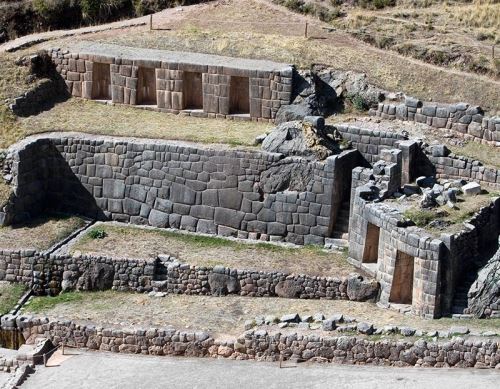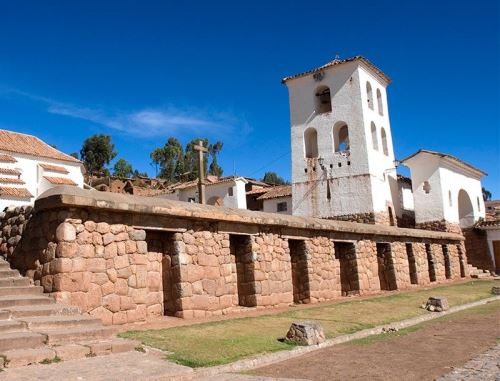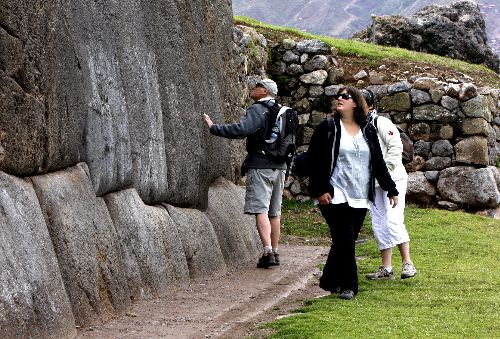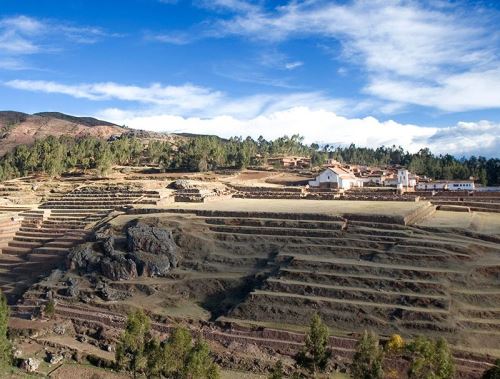01:00 | Cusco (Cusco region), Jul. 6.
Alternative attractions to the Inca Citadel of Machu Picchu experienced a 14.25% increase in visitors during the first half of the year compared to 2024, according to the Cusco Cultural Tourism Integrated Services Committee (Cosituc), the entity that issues tourist tickets.
Total revenue from ticket sales between January and June 2025 reached S/45,777,610 (US$12,938,838), according to official statistics.
Of this amount, S/5,708,250 (US$1,613,412) —equivalent to 14.25%— reflects the increase in domestic and foreign visitors to the 16 archaeological parks and museums.
According to the report, a total of 549,773 tickets were sold to both domestic and foreign tourists between January and June. April alone accounted for 109,624 tickets.
Among domestic tourists, the highest number of sales was recorded in January, with 39,351 tickets, while April saw the most foreign visitors, with 86,847 tickets sold.
Cosituc General Manager Walter Oblitas Sandoval told Andina News Agency that the increase in visitor numbers is due to the promotion of Cusco both in Peru and abroad, as well as the international showcasing of Cusco's living culture in countries like the United States and Spain.
He highlighted events such as the recently celebrated Inti Raymi, along with the traditional dances and music performed at the Qosqo Center of Native Art.

"As of June 30, actual revenue has surpassed the projected income for 2025, as shown by the 14.25% increase. Based on visitor projections, this upward trend is expected to continue through the end of this year," he stated.
Oblitas explained that this increase comes as a surprise, as in previous years the trend was different.
As of June, 29% of visitors were domestic tourists, while 71% were foreign tourists who visited sites such as Sacsayhuaman, Q'enqo, Puka Pukara, Tambomachay, Pisac, Ollantaytambo, Moray, Chinchero, Tipon, and Pikillaqta.

Other frequently visited sites include the Monument to Pachacutec, the Qosqo Center of Native Art, and the Site Museums of Coricancha, Popular Art, Contemporary Art, and the Regional History Museum.
The most visited attractions are: Sacsayhuaman, Q'enqo, Puka Pukara, Tambomachay, Chinchero, Ollantaytambo, and Pisac.
The revenue is distributed
According to Cosituc and in compliance with the law, the funds collected are distributed in percentages to the Decentralized Culture Directorate in Cusco, the Municipality of Cusco, Cusco's Regional Management of Foreign Trade, Tourism and Handicrafts (Gercetur), the Provincial Municipalities of Urubamba, Calca, and Quispicanchi, as well as the District Municipalities of Chinchero, Maras, Pisac, Oropesa, and Lucre.
Oblitas stated that these funds should be invested in the conservation and maintenance of archaeological sites, as well as in tourism promotion —such as the efforts carried out by Gercetur and the Directorate of Culture— and more recently, in prioritizing health care during emergencies.
"Precautionary measures are being taken through agreements —for instance, there is an agreement with the Peruano Suiza Clinic and an ambulance stationed at Sacsayhuaman— and more agreements are being pursued," he said.

Important
Due to the high influx of visitors, the sale of the Tourist Ticket has reportedly led to unscrupulous individuals selling already-used tickets, which are allegedly being offered at the main square and surrounding areas.
In response to this situation, Cosituc urges visitors and tourism operators not to be misled and to purchase tickets only at official sales points to avoid scams.

(END) PHS/MAO/MVB
Published: 7/6/2025